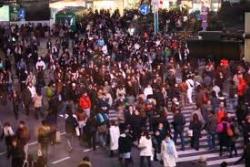 The Japanese government’s worst-case scenario at the height of the nuclear crisis last year warned that tens of millions of people, including Tokyo residents, might need to leave their homes, according to a report obtained by The Associated Press. But fearing widespread panic, officials kept the report secret.
The Japanese government’s worst-case scenario at the height of the nuclear crisis last year warned that tens of millions of people, including Tokyo residents, might need to leave their homes, according to a report obtained by The Associated Press. But fearing widespread panic, officials kept the report secret.
The recent emergence of the 15-page internal document may add to complaints in Japan that the government withheld too much information about the world’s worst nuclear accident since Chernobyl.
It also casts doubt about whether the government was sufficiently prepared to cope with what could have been an evacuation of unprecedented scale.
The report was submitted to then-Prime Minister Naoto Kan and his top advisers on March 25, two weeks after the earthquake and tsunami devastated the Fukushima Dai-ichi nuclear power plant, causing three reactors to melt down and generating hydrogen explosions that blew away protective structures.
Workers ultimately were able to bring the reactors under control, but at the time, it was unclear whether emergency measures would succeed. Kan commissioned the report, compiled by the Japan Atomic Energy Commission, to examine what options the government had if those efforts failed.
Authorities evacuated 59,000 residents within 20 kilometers (12 miles) of the Fukushima plant, with thousands more were evacuated from other towns later. The report said there was a chance far larger evacuations could be needed.
The report looked at several ways the crisis could escalate — explosions inside the reactors, complete meltdowns, and the structural failure of cooling pools used for spent nuclear fuel.
It said that each contingency was possible at the time it was written, and could force all workers to flee the vicinity, meaning the situation at the plant would unfold on its own, unmitigated.
Using matter-of-fact language, diagrams and charts, the report said that if meltdowns spiral out of control, radiation levels could soar.
In that case, it said evacuation orders should be issued for residents within and possibly beyond a 170-kilometer (105 mile) radius of the plant and “voluntary” evacuations should be offered for everyone living within 250 kilometers (155 miles) and even beyond that range.
That’s an area that would have included Tokyo and its suburbs, with a population of 35 million people, and other major cities such as Sendai, with a million people, and Fukushima city with 290,000 people.
The report further warned that contaminated areas might not be safe for “several decades.”
“We cannot rule out further developments that may lead to an unpredictable situation at Fukushima Dai-ichi nuclear plant, where there has been an accident, and this report outlines a summary of that unpredictable situation,” says the document, written by Shunsuke Kondo, head of the commission, which oversees nuclear policy.
After Kan received the report, he and other Japanese officials publicly insisted that there was no need to prepare for wider-scale evacuations.


